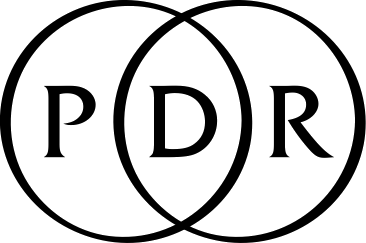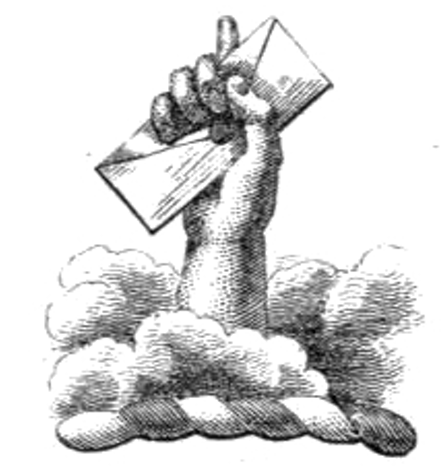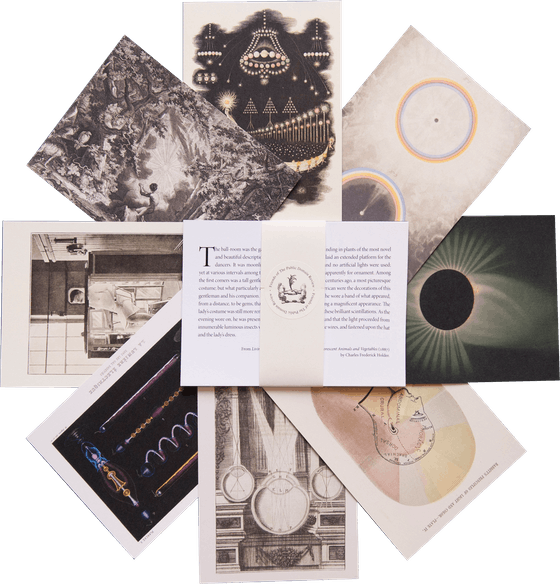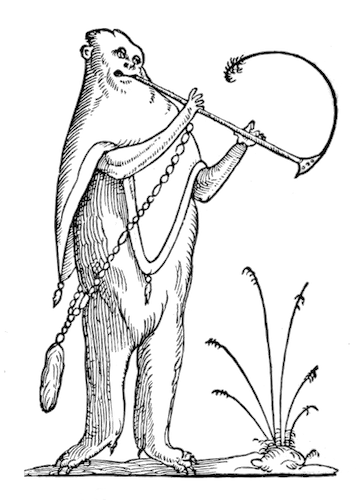
Through the Magnifying Glass: The Cheese Mites (1903)
Magnification devices were frequently used to frame cinematic fantasies and invite voyeurism in early twentieth-century “trick films”. In the 1900 Grandma's Reading Glass, the titular glass amplifies an actor’s huge, oscillating eye. That same year, in a short titled As Seen Through a Telescope, the lens lends itself to the lewd. A top-hatted man searches the street with a spyglass. Cut to a woman’s ankle filling its circular window, her foot perched on a bicycle pedal, as a pair of hands languorously ties her laces and pats her calf. In the 1909 Princess Nicotine, a smoking bachelor discovers a pair of mischievous fairies through his glass. A circular frame helps create the illusion that the sprites (actors interacting with larger-than-life pipes and piles of tobacco) are only a few inches high. In Hay Plumb’s 1914 short The Magic Glass, a mad scientist creates a magnifying glass that can see through walls: he captures his son sneaking food and his maid sneaking a drink.
In Charles Urban and Francis Martin Duncan’s 1903 movie The Cheese Mites, magnification transports us not just to the miniature, but to the microscopic world. We watch a man sit down to a meal: he slices bread, cuts a block of cheese, and raises his magnifying glass to the newspaper. When the glass lowers to his stilton, he performs a five-seconds-long double take. Cue a teeming sea of cheese mites. In stark, backlit monochrome, filmed through a tabletop microscope, the mites clumsily maneuver around each other, legs waving.
When it aired at the Alhambra Music Hall, The Cheese Mites offered its audience a sensational introduction to microscopy. Its popularity, and that of its creators’ film series, The Unseen World, demonstrated the commercial viability of scientific cinema. The view under the “Urban-Duncan Micro-Bioscope” made for excellent entertainment, and cemented Urban’s reputation as a pioneer of nonfiction film. The Cheese Mites was quickly parodied in The Unclean World, a movie in which the mites are revealed to be comical beetles. Word spread that Urban and Duncan’s film, at the behest of anxious cheese manufacturers, had become one of the earliest victims of film censorship. Or was it Urban, promoter at heart, who pulled his own film from the Alhambra?
The circular cutaways employed in The Cheese Mites and other trick films, signaling a perspectival shift from our world to another, bear an uncanny resemblance to another form of entertainment: the peepshow, a predecessor of movie magic. Today, of course, the peepshow is remembered mostly as a medium for pornography. But according to researcher Tony Lidington, it was also, “for at least 150 years prior to the innovation of the bioscope and indeed, for some years after the beginnings of cinema . . . the basis of illustrated storytelling and lecturing”. Similar to the “trick film”, peepshows used forced perspective to play with scale. Within large, wooden crates serving as miniaturized theaters, the itinerant peepshowman could layer cutouts and props to create a convincing illusion of depth. For a small fee, viewers craned toward a tiny viewing hole for a wholly private spectacle.
The earliest motion pictures also took the shape of peepshows: the kinetoscope flashed rolls of film behind a circular lens for an audience of one. At kinetoscope parlors, beginning in 1894, viewers stooped to watch short reels of boxing matches and dancing women. Like the long history of traveling peepshows before, many of the earliest filmgoers peered at movies through tiny, circular eyepieces — which cultivated a sense of intimacy, or even eroticism, as they leaned in to get a better look. Managing a Detroit, Michigan kinetoscope parlor was also, as it happens, The Cheese Mites director Charles Urban’s first job in film.
The Cheese Mites, of course, is obscene in its own way, the peepshow’s private spectacle swapped for the special effect of a circular frame. In his 1912 volume Moving Pictures, How They Are Made and Worked, Frederick Arthur Ambrose Talbot celebrates the recent rise of “micro-cinematography”:
The thought of a whole world of organisms, existent, material, yet so small as to be invisible, has a peculiar fascination, and we are eagerly curious to get some conception of their structure and movements. But the possibility not merely of magnifying the red and white corpuscles of the blood till they appear like huge hoops, or the parasite of the sleeping sickness to a length of some two feet, to follow the attacks of these foes upon the human organism — such a possibility makes one feel that there is no limit to the power of man over the natural world.
For at least some of The Unseen World’s audience, the character of the cheese mite — commonly included in hobbyist microscope sets — would have been familiar. In 1901, another trick film titled The Cheese Mites, or Lilliputians in a London Restaurant featured a cast of tiny actors leaping out of a hunk of brie. “Cheese mites”, in this case, was only a byword for the small: the actors are fully dressed, the only mite-like thing about them is their size.
Talbot captures the heady promises of microscopy, the excitement of new scientific horizons. What he fails to imagine is what it must have been like to be in the Alhambra theater when The Cheese Mites star’s magnifying glass pans to his plate. As the silver screen suddenly swarmed with alien life, crawling with what Urban described as “great uncanny crabs”, one has to imagine a reaction far beyond the wildest hopes of the traveling peepshowman.
Enjoyed this piece? We need your help to keep publishing.
The PDR is a non-profit project kept alive by reader donations – no ads, no paywalls, just the generosity of our community. It’s a really exciting model, but we need your help to keep it thriving. Visit our support page to become a Friend and receive our themed postcard packs. Or give a one-off donation. Already a supporter? A huge thank you for making all this possible.
Jul 17, 2025





